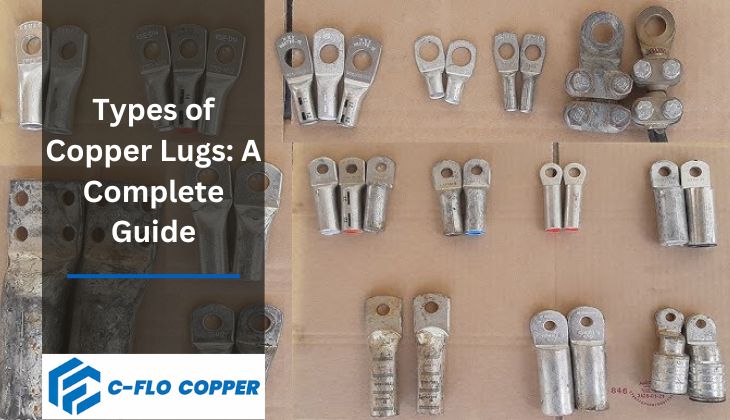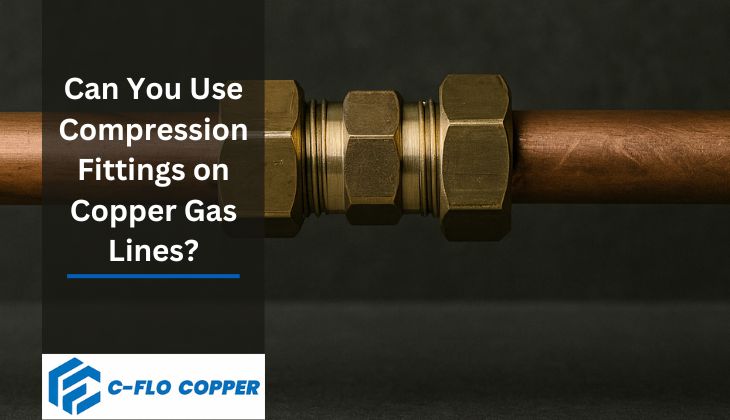In modern plumbing, compression fittings are a reliable, mess-free alternative to soldering—perfect for connecting copper pipes in both residential and commercial systems. Whether you’re working on a quick repair or a full-scale installation, compression fittings offer strong, leak-proof joints with minimal tools and no open flames.
At C-FLO Copper, we offer a range of high-quality copper tubes and compression fittings engineered to meet the highest standards for safety, durability, and ease of use.
🔍 What Are Compression Fittings?
A compression fitting is a type of coupling used to connect two pipes or a pipe to a fixture. It creates a mechanical seal using three main parts:
- Compression Nut – threads onto the fitting body.
- Compression Ring (Ferrule) – gets compressed between the nut and body.
- Fitting Body – where the pipe inserts and the seal is formed.
When the nut is tightened, the ferrule compresses around the pipe, creating a tight, reliable seal that holds under pressure—without requiring soldering or special bonding agents.
🛠️ Step-by-Step: Installing Compression Fittings on Copper Pipe
1. Choose the Right Pipe and Fitting Size
Start by ensuring the copper pipe and fitting size match. At C-FLO, we offer a wide range of metric and imperial sizes, suitable for both domestic and industrial applications.
2. Cut the Copper Pipe Clean and Square
Use a pipe cutter (not a hacksaw) for an even, clean cut. A clean edge ensures the ferrule seals properly.
3. Deburr and Clean the Pipe
Use a deburring tool or round file to remove sharp edges inside and out. Wipe the pipe with a clean cloth to remove any debris or oxidation. For best results, use C-FLO pre-cleaned copper tubing that’s ready to fit straight out of the box.
4. Slide the Components in Place
- First, slide the compression nut over the pipe.
- Then, slide on the ferrule (compression ring).
- Insert the pipe into the fitting body fully, ensuring it bottoms out.
5. Tighten the Fitting
- Hand-tighten the nut onto the fitting body.
- Use two wrenches: hold the fitting with one and tighten the nut with the other.
- Tighten approximately one full turn past hand-tight. Don’t overtighten—it can distort the pipe or ferrule.
6. Pressure Test the Connection
Turn on the water or pressurize the system gradually. Observe the joint for leaks. If you notice drips or weeping, tighten another 1/4 turn.
💡 Best Practices for Compression Fittings
- ✔️ Use annealed copper pipe from C-FLO for best bendability and sealing.
- ❌ Avoid reusing compression rings—they’re designed for single-use only.
- ✔️ Always support piping near fittings to prevent movement or joint fatigue.
- ❌ Don’t use sealant tape or pipe dope on compression threads—it’s unnecessary and can interfere with the seal.
- ✔️ For gas or high-pressure applications, confirm the ferrule material (brass or copper) is compatible with your system.
⚙️ Common Applications
Compression fittings are widely used in:
- Potable water lines and shut-off valves
- HVAC and hydronic heating systems
- Under-sink plumbing
- Ice makers and appliance hookups
- Low-pressure gas lines (with appropriate certifications)
They are ideal in situations where open flame soldering is not permitted, such as in hospitals, schools, and older buildings.
🧰 Tools You’ll Need
- Pipe cutter
- Deburring tool
- Adjustable wrenches (2)
- Clean cloth
- Pipe guide for sizing (optional)
- Leak detection solution (for gas or pressurized lines)
🔒 Safety Notes
- Never overtighten; compression fittings rely on compression—not brute force.
- Use only certified fittings for gas applications—C-FLO offers gas-rated compression sets for added safety.
- Always follow local plumbing codes and building regulations.
🌟 Why Use C-FLO Copper Compression Solutions?
At C-FLO Copper, we manufacture premium copper tubes and compression fittings that deliver performance, consistency, and peace of mind. Our fittings:
- Are precision-machined for secure, leak-proof connections
- Available in multiple grades and diameters
- Rated for water, air, and low-pressure gas systems
- Easy to install with basic tools—no training or flame required
All our copper products conform to international standards including ASTM B88, EN 1057, and IS 2501, ensuring safe operation under varying pressure and temperature ranges.
By C-Flo Copper | April 8, 2025





